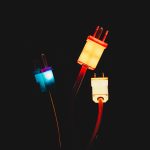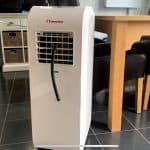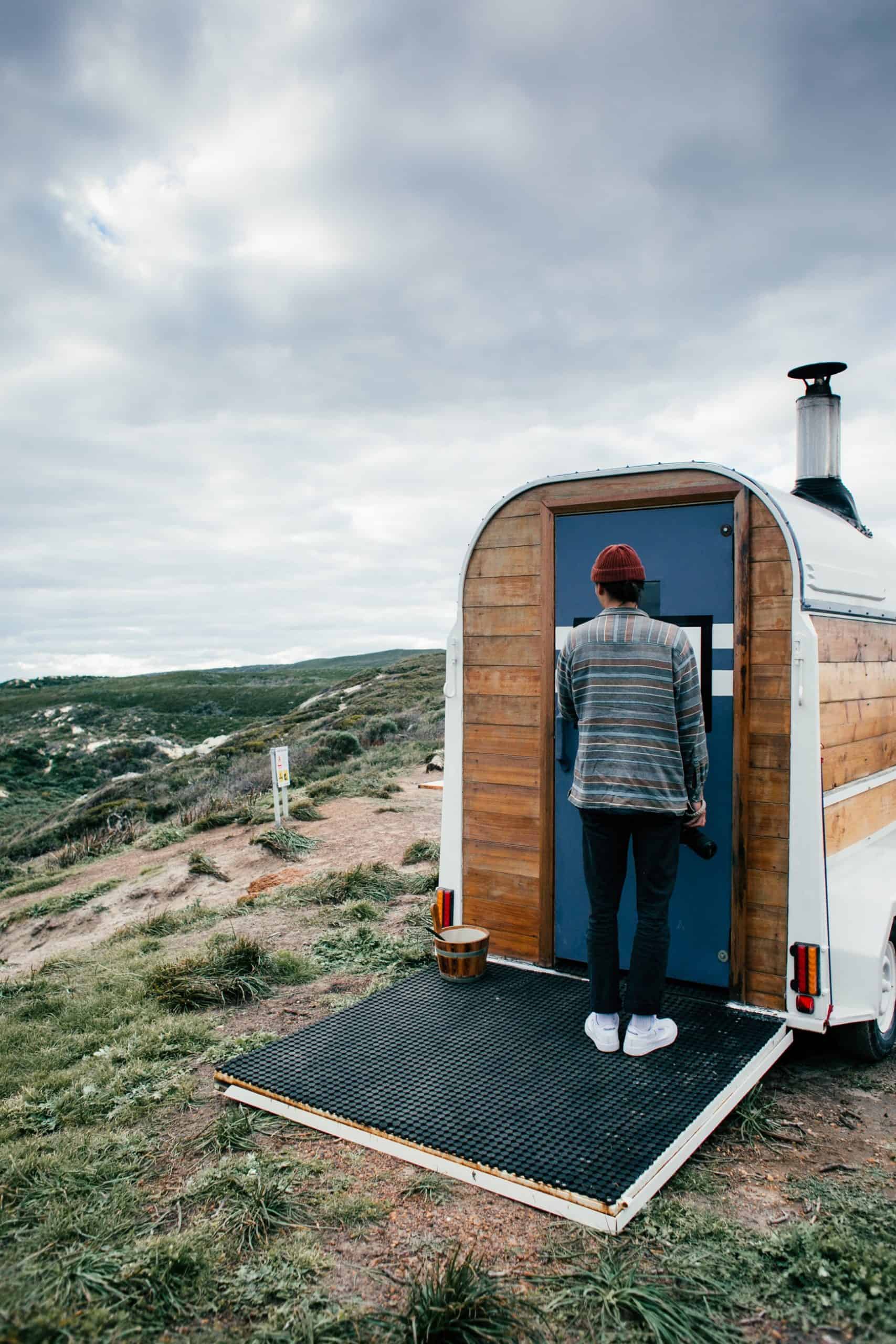The air from fans is invaluable in clammy weather and hot summers. They are a blessing for RV and boat traveling as they can dry an area out or help you keep cool. But you need to ensure you know more about your fan and inverter to get the most out of it.
The first and obvious question that pops up in this regard is how long can a fan run off an inverter?
As you may have guessed, the answer to this will depend on the size/type of the fan (how many amps does it use) and the size of your inverter.
Power inverters come in many sizes.
You must know two things to decipher how long an inverter will run a fan. First off, find out the wattage rating of the device in question – the fan in this context.
The wattage of most appliances is indicated on the product and/or in the manual. Alternatively, you can find the wattage rating of a device with the formula – Volts (120) x Amps = Watts.
Let’s say you have one of these top-selling 12-volt RV fans. It puts out 8 watts and 0.6 amps. A car battery with a 50Ah rating.

Will a power inverter run a fan
A power inverter will run a fan if it is rated at the proper wattage (continuous watts and surge watts).
Of course, there are other parts to the equation. There’s a good chance you will be using other devices and appliances while running the fan.
If so, you need to add the wattage rating of the fan to the total wattage of all the devices being used simultaneously.
Let’s say you kick back on a sunny day and work on your laptop. Your fan draws 50 – 60 watts and your laptop is rated 40 to 50 watts. That’s 90–110 watts + (extra 50% for spikes).
You need a 200-watt inverter. That said, you probably need a 3000W inverter for an off-grid cabin if you have a fridge, TV, fan, and kitchen equipment.
- It takes more power to run lots of electric equipment simultaneously.
Fans do not use a ton of energy.
They need significantly less electricity compared to a microwave, fridge, or air conditioner. However, fans have an inductive load.
Simply put, a fan’s motor starts with a high electrical load and then settles into an operational load.
Ensure that the continuous power rating of your power inverter is greater than the fan’s maximum power draw (in watts).
Lastly, the type of inverter – pure sine wave or modified sine wave – will play a role in the fan speed. Pure sine wave inverters are better in comparison.
How many watts does it take to run a box fan?
A box fan can use anything between 25W to 90W depending on the size.
Box fans with a 20-inch blade diameter are the most commonly sold products.
They are typically rated up to 100W.
- A 20-inch box fan uses 80 to 90 watts on the high setting (full speed) and 50 to 60 watts on the low setting. The exacting details depends on the make/model of the fan.
Powerful box fans have a higher CFM.
CFM refers to cubic feet per minute or ‘airflow’ in layman’s terms. It indicates how much air the fan moves and is determined by the design of the fan-blades (shape/size) and the capacity of a fan’s motor.
Generally, box fans have three speed settings – low, medium, and high.
The fan will consume fewer watts at low speed than it will on the high setting. On an average, a box fan (20 inches) ranges between 75W to 90W at high speed. Small box fans use 25W to 30W at full speed.
Take the watts consumed at full speed into account when you buy. Blade material and CFM are other key considerations regarding energy efficiency. The Pelonis 3-Speed model is good example.
Roof vent fans like the Hike Crew 14” and Camco Standard are other popular choices.
Here is a list of five top-selling box fans on Amazon along with the wattage:
- Genesis 20 inch Box Fan – 53 watts
- LaskoB20500 20 inch Box Fan – 90 watts
- Comfort Zone CZ10N – 10 inch Box Fan – 38 watts
- Amazon Basics DK1901 20 inch Box Fan – 67 watts
- Polar-Aire S-9PB 9 inch Box Fan – 29 watts
Are inverters noisy?
An inverter is not noisy if you have mounted it correctly and are using a high-quality product.
Inverters have an exhaust fan that cycles on periodically. It’s a cooling feature that will cycle on more often if your inverter is working hard to power a load.
The fan isn’t noisy per se. You mostly won’t hear it over ambient noise.
High-quality inverters are very quiet.
Cheaper models are more prone to being noisy. Older models are also notorious, but that’s more about a humming sound from the transformer.
Noise from the fan in the inverter can be a sign that there is some underlying issue that needs to be rectified. In many cases, improper installation is the culprit.
Check the orientation of your inverter, dust, or other junk in the vent, and the location (is it near a heat source?) if the cooling exhaust fan cycles on very frequently.
Ensure that the inverter is mounted in a way that doesn’t impede the airflow and perform regular maintenance.
Check out this YouTube video that shows how to install an Inverter in your RV.
How long will a 12v battery run a fan without an inverter?
How long a 12v battery can run a fan depends on how many amperes (amps) the fan draws and the amp hours (Ah) of the battery.
Let’s say it’s a heavy-duty 12v battery with 100Ah and the fan needs 2 amps. That battery can run the fan for 50 hours (100Ah / 2 amps). However, don’t expect 100% efficiency. 75% to 90% of efficiency is expected.
So, a more realistic answer to the above calculation would be 38–45 hours instead of 50 hours.
You can figure this out for any product using the same formula. However, inverters are essential because they also work inversely to charge the battery with the mains ON.
The battery will eventually drain, and you need to recharge them with the inverter output.
How long will a 12v battery run a fan with an inverter?
The AH/amps formula can help you calculate how long a 12v battery can run a fan for your RV with an inverter.
The answer depends on the model of the fan and the setting you use. As discussed above, the fan will use less or more amperage based on the setting (low, mid, or high).
Let’s take a mock scenario.
We have a small box fan (30W) that uses 2.5amps at 12v and a 12v battery with 50 Ah. Ah / Amps = 50/2.5 = 20 hours. Deduct 10% of that because the inverter has 90% efficiency. So, you can expect a 12v battery to run that fan for 18 hours.
Can you run a fan with a 12v car battery?
You should not power standard appliances or a household fan with a 12-volt car battery without an inverter.
A 12v DC battery can only generate a small amount of power. With a power inverter, you can run a box fan, USB fan, tower fan, or any other type of fan.
Car batteries are not designed to ‘deep-cycle’ and that’s why they are not ideal for this scenario.
Car batteries are called starter batteries. They are designed for short, powerful bursts for ignition or cranking the engine. A new car battery can withstand 50% discharge 100 times before it dies.
Deep cycling batteries are special lead-acid batteries with the same form factor as car batteries.
However, they have different battery plates for extended charge and discharge cycles. Generally speaking, deep cycling batteries are used for recreational vehicles and off-grid energy.
In Conclusion
In this post, we went over some common questions related to fans for RVs and boat travelling.
We discussed the methods to calculate how long an inverter and car battery can run a fan. Hopefully, that should cover all bases of this subject.




